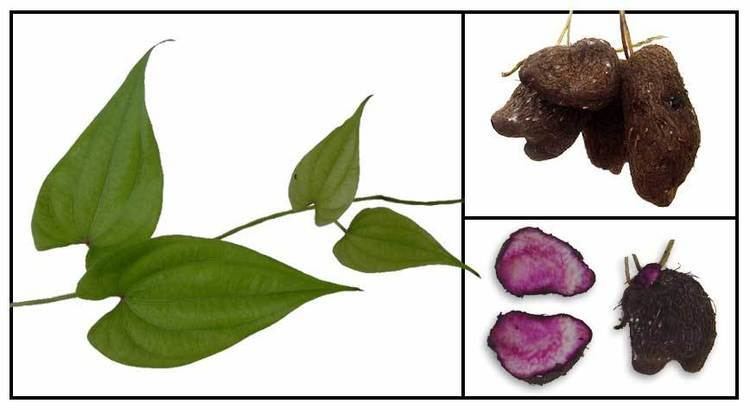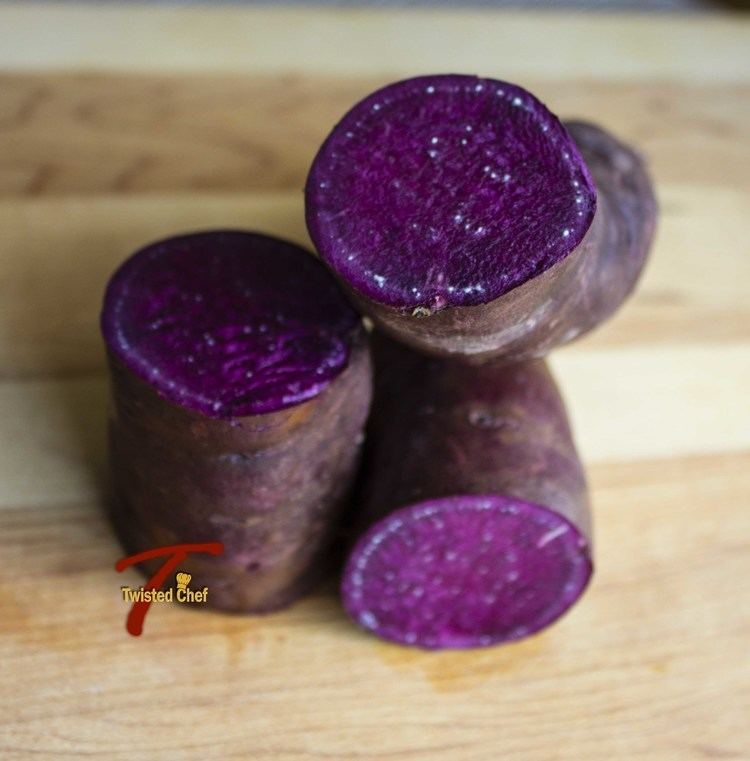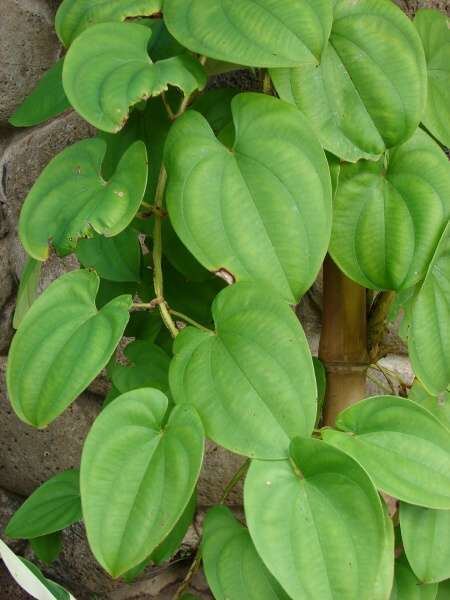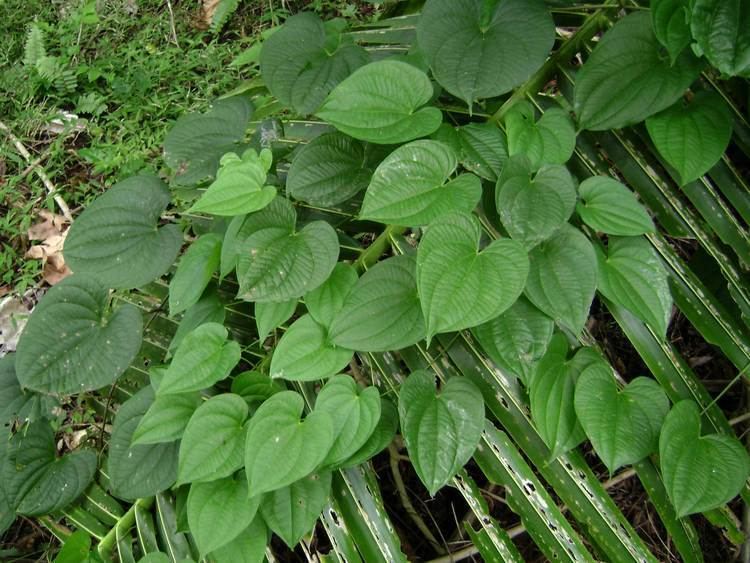Rank Species | Genus Dioscorea Higher classification Dioscorea | |
 | ||
Similar Yam, Taro, Halo‑halo, Ube halaya, Sugar | ||
Success on experimental method of propagating yam dioscorea alata
Dioscorea alata, known as purple yam and many other names, is a species of yam, a tuberous root vegetable. The tubers are usually bright lavender in color, hence the common name, but they may sometimes be white. It is sometimes confused with taro and the Okinawa sweet potato (Ipomoea batatas cv. Ayamurasaki), although D. alata is also grown in Okinawa where it is known as beniimo (紅芋). With its origins in the Asian tropics, D. alata has been known to humans since ancient times.
Contents
- Success on experimental method of propagating yam dioscorea alata
- How to propagate true yams dioscorea alata a second harvest
- Common names
- Culinary
- Medicinal
- Other uses
- Weed problems
- References

How to propagate true yams dioscorea alata a second harvest
Common names

Because it has become naturalized throughout tropical South America, Africa, Australia, the US southeast, D. alata has many different common names from these regions. In English alone, aside from purple yam, other common names include greater yam, Guyana arrowroot, ten-months yam, water yam, white yam, winged yam, or simply yam. In other cultures and languages it is known variously as ratalu or violet yam in India, rasa valli kilangu (இராசவள்ளிக்கிழங்கு) in Tamil, dandila (දන්දිල) in Sinhala, thuppa genasu (ತುಪ್ಪ ಗೆಣಸು) in Kannada, thoona or soona kerungu (ತೂ/ಸೂಣ ಕೆರುಂಗು) in Tulu, kondfal (कोंदफळ) in Marathi, kachil (കാച്ചില്) in Malayalam, and khoai mỡ in Vietnam. For the Igbo people of southern Nigeria, it is called ji or ji abana; while for the Yoruba people of the southwestern Nigeria, it is called isu ewura.
*qube / *ʔube can be reconstructed as the Proto-Malayo-Polynesian word for D. alata, and words descended from it are found throughout the geographic range of this widespread language family, though in some daughter languages they are generalized or transferred to other root crops. Examples include Tagalog and Visayan ube or ubi, Indonesian and Malay ubi**, Malagasy ovy**, Fijian uvi, Tongan ʻufi, Samoan ufi**, as well as Māori and Hawaiian uhi. D. alata was one of the canoe plants that the Polynesians brought with them when they settled new islands.
** Not specific to D.alata
Culinary

Purple yam is used in a variety of desserts, as well as a flavor for ice cream, milk, Swiss rolls, tarts, cookies, cakes, and other pastries. In the Philippines, it is known as ube and is often eaten boiled or as a sweetened jam called ube halayá; the latter is a popular ingredient in the iced dessert called halo-halo. In Maharashtra, the stir-fried chips are eaten during religious fasting. Purple yam is an essential ingredient in Undhiyu. Purple yam is a popular dessert in Jaffna, Sri Lanka.
Ube is now making a scene in the American foodie trend. It is now being used to make ube truffles, ube leche flan cupcakes and ube donuts. Examples can be found at Cafe 86 (Southern California) and Manila Social Club in New York.
D. alata is valued for the starch that can be processed from it.
Medicinal
In folk medicine, D. alata has been used as a laxative and vermifuge, and as a treatment for fever, gonorrhea, leprosy, tumors, and inflamed hemorrhoids.
The color of purple varieties is due to various anthocyanin pigments. The pigments are water-soluble, and have been proposed as possible food coloring agents.
Other uses
D. alata is sometimes grown in gardens for its ornamental value.
Weed problems
Dioscorea alata is native to Southeast Asia (Indochina, Philippines, Indonesia, etc.) and surrounding areas (Taiwan, Ryukyu Islands, Assam, Nepal, New Guinea, Christmas Island). It has escaped into the wild in many other places, becoming naturalized in parts of China, Africa, Madagascar, the Western Hemisphere, and various islands in the Indian and Pacific Oceans. It persists in the wild in the United States in Louisiana, Georgia, Alabama, Florida, Puerto Rico, Haiti, and the U.S. Virgin Islands. It is considered an invasive species, at least in Florida.
